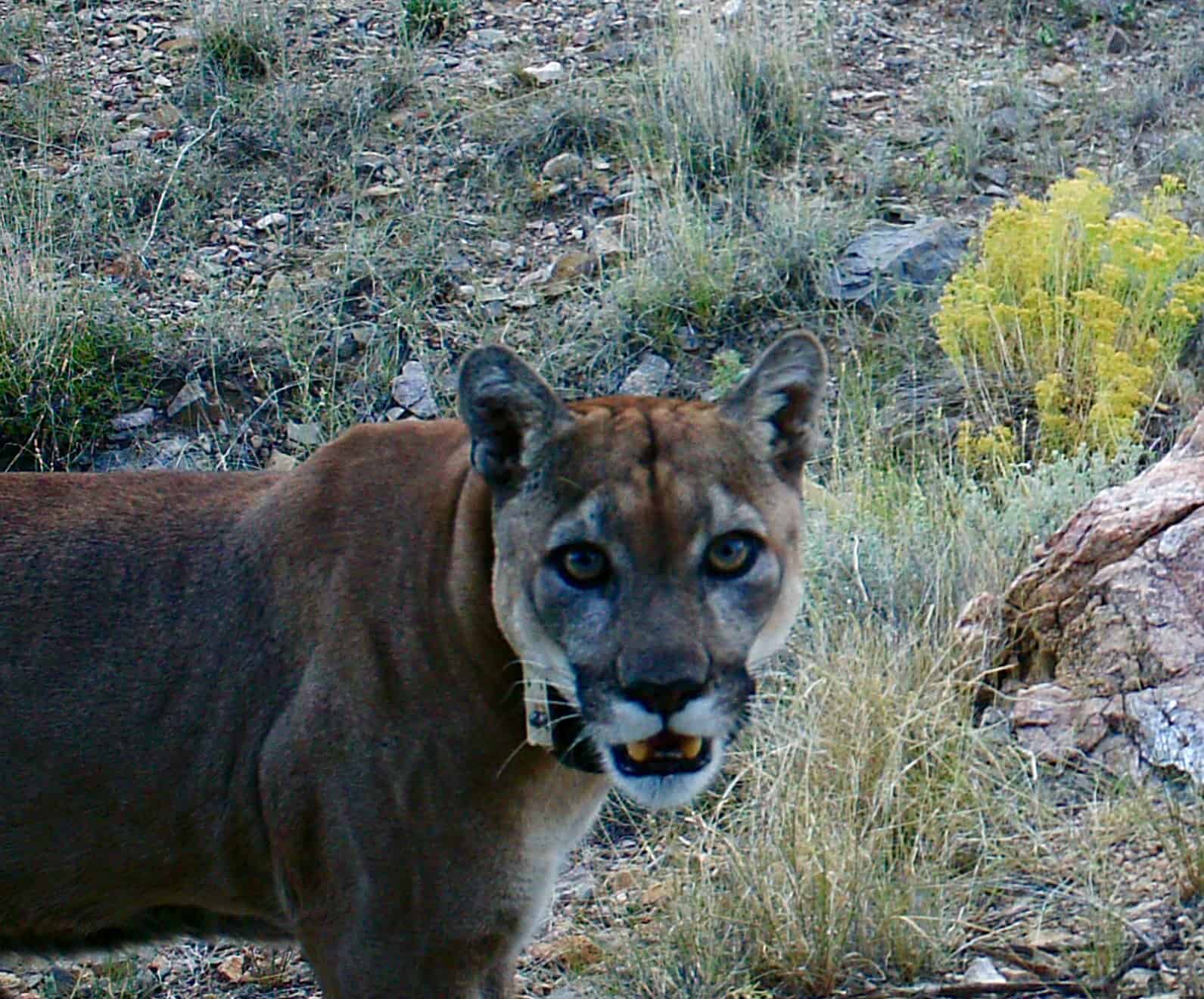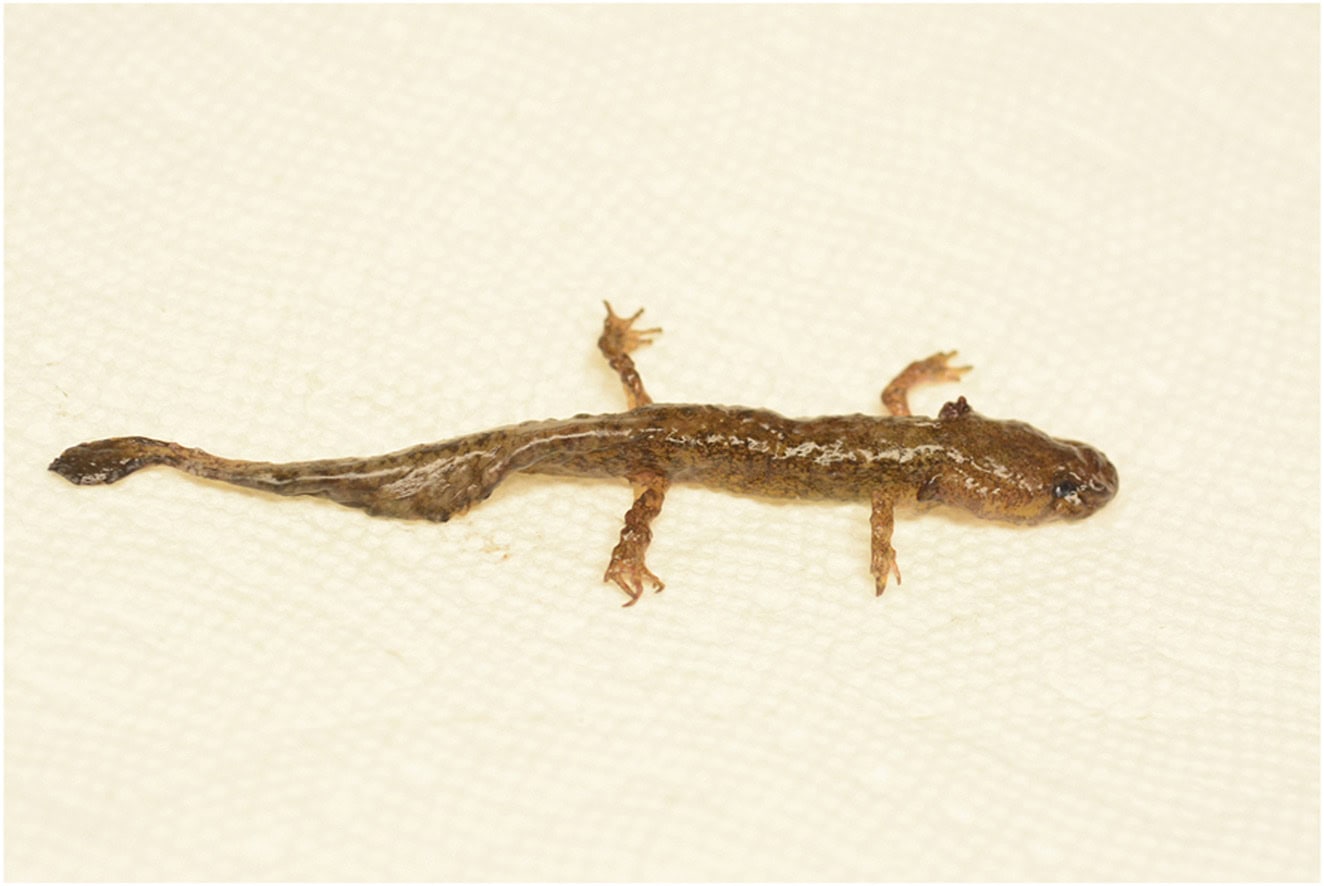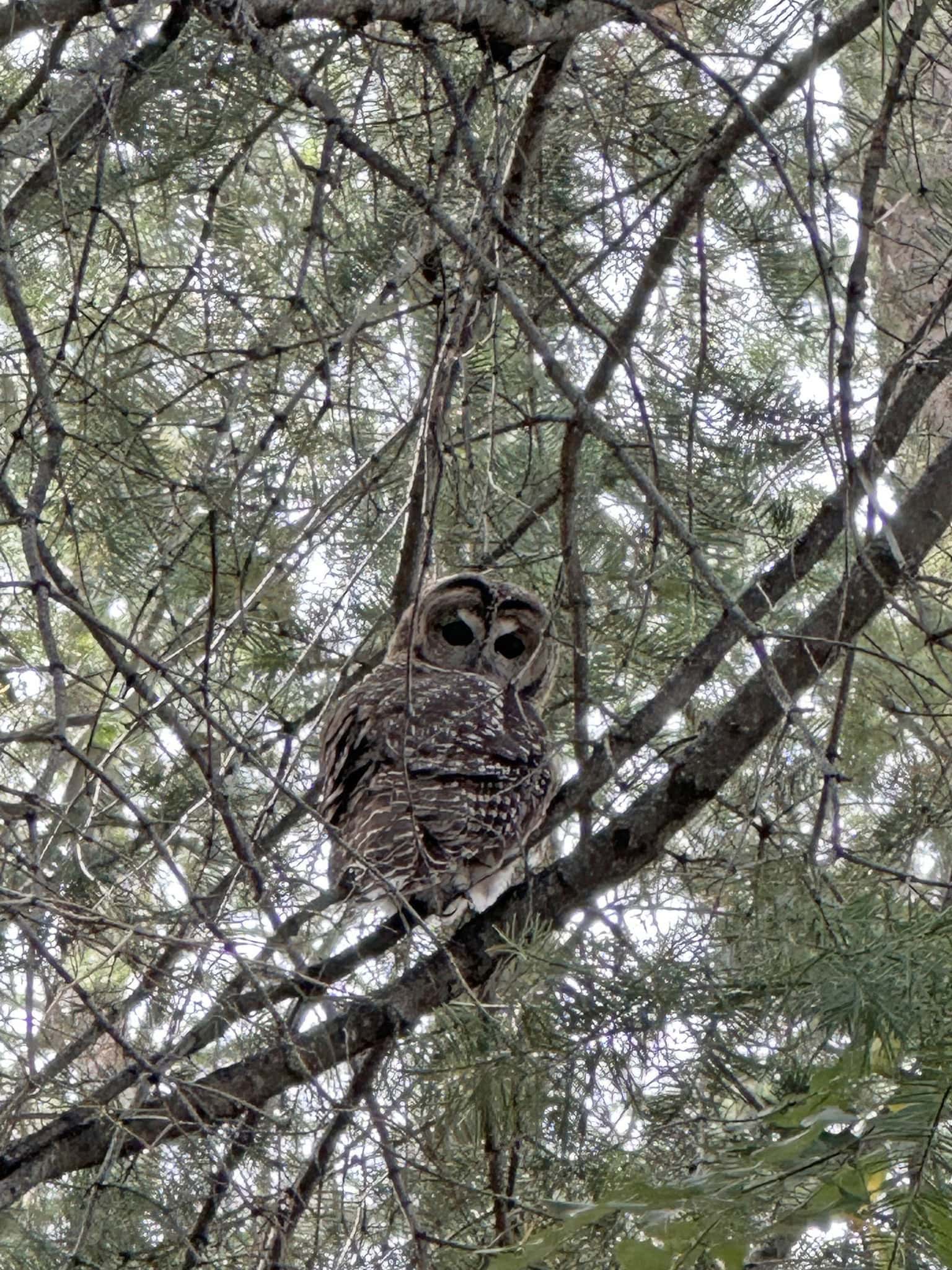Share this article
Wildlife Featured in this article
- cougar
- mule deer
- desert bighorn sheep
TWS2022: Do cougars use artificial water sources to ambush prey?
Researchers tracked big cats in New Mexico and Arizona to learn more about predation patterns
A big juniper tree sat about 15 feet from the artificial water source that the doe and its fawn approached to get a drink. The next moment happened in a flash—a cougar burst forward from behind the cover, chasing away the mother and standing above the fawn, which sat down calmly as if accepting its fate.
TWS member Hunter Prude, a wildlife biologist at Ted Turner’s Armendaris Ranch, and his colleagues wondered whether this kind of activity was happening often—were cougars (Puma concolor) explicitly using drinking stations to capture easy meals?
It appears not, according to research Prude presented at The Wildlife Society’s 2022 Annual Conference in Spokane. Or at least cougars aren’t using these drinking stations directly.
“It wasn’t water sources alone that explained kill sources,” he said.
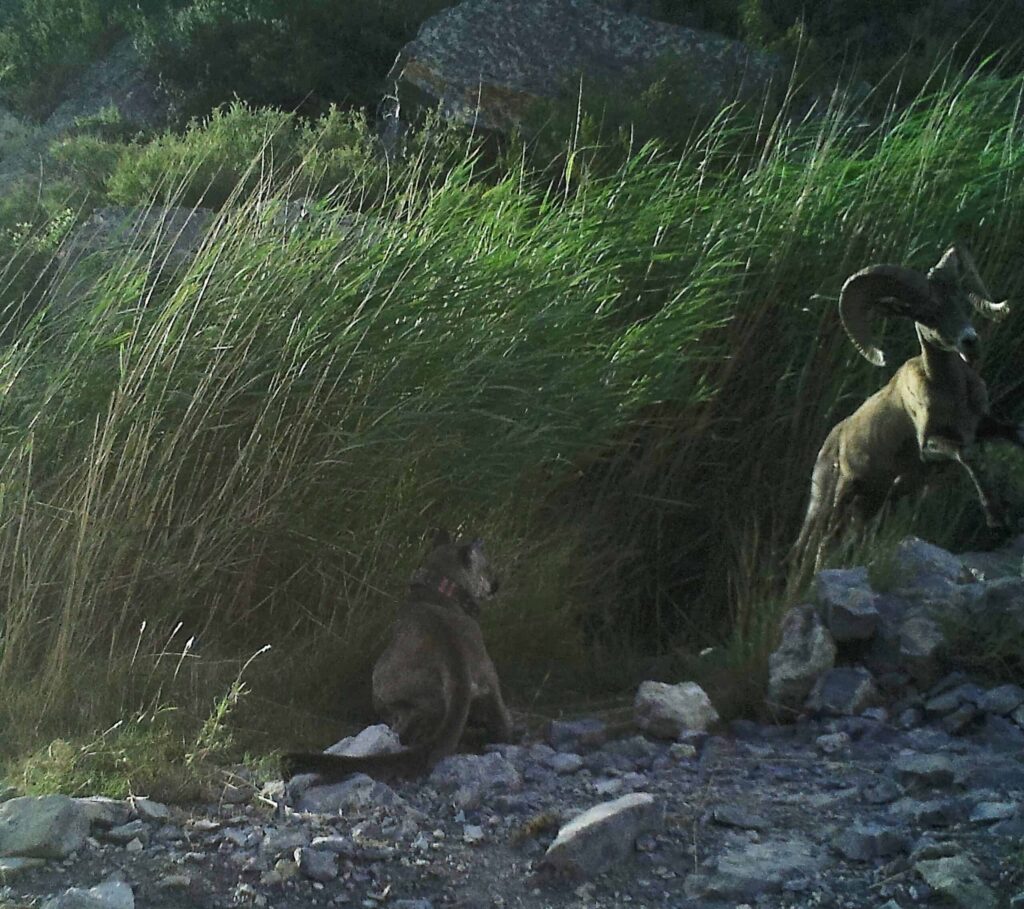
From 2007 to 2018, the researchers collared 82 cougars in different study areas in New Mexico and Arizona. After collecting and analyzing data on the patterns of 1,556 ungulate kills, they found that while cougars did prey on some mule deer (Odocoileus hemionus) next to artificial water sources, these incidences were rare. They seemed to occur opportunistically, in cases where cougars were perhaps already at the water source when an unlucky mule deer showed up for a drink.
Just the same, kill sites were roughly related to water sources. The majority of kills did happen relatively close to water sources, though not explicitly at them—in a space from 500-2,500 meters away from the water sources.
Prude, who conducted this work as part of his master’s research at New Mexico State University, said this is likely because mule deer populations are more concentrated around water sources. Cougars prey primarily on mule deer in this region, so it makes sense that they would also hunt more often in these areas of higher mule deer density.
But that doesn’t mean they are explicitly using water sources as places to ambush mule deer, other than opportunistically, he said.
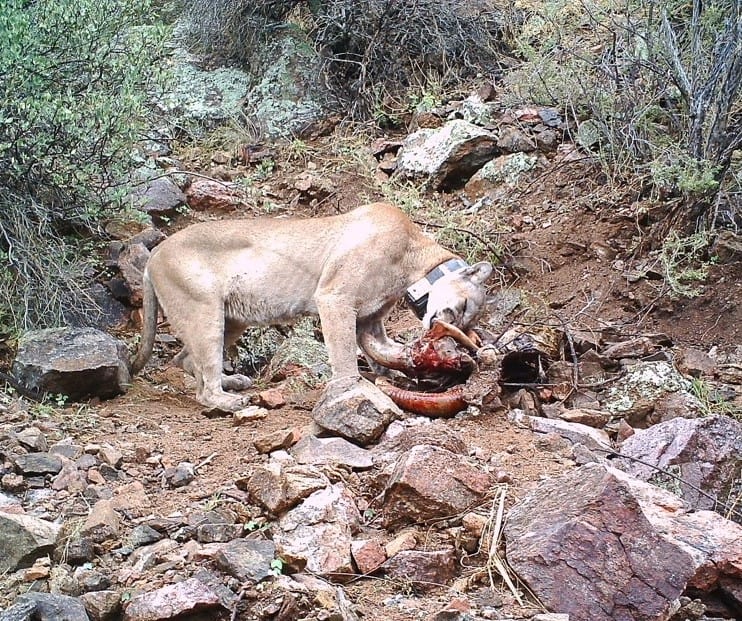
In the case of the one artificial water source near the juniper tree described above, several instances of predation did occur. But that may have more to do with the placement of the juniper tree near the drinking station. Water sources may also make it difficult for prey to escape. In one case captured on the camera, a mule deer fawn smacked against the converted roof catchment when trying to escape. Sometimes the design of these structures may favor a predator by helping them to corner prey like this. If the structure was built slightly differently, that obstacle wouldn’t have blocked it.
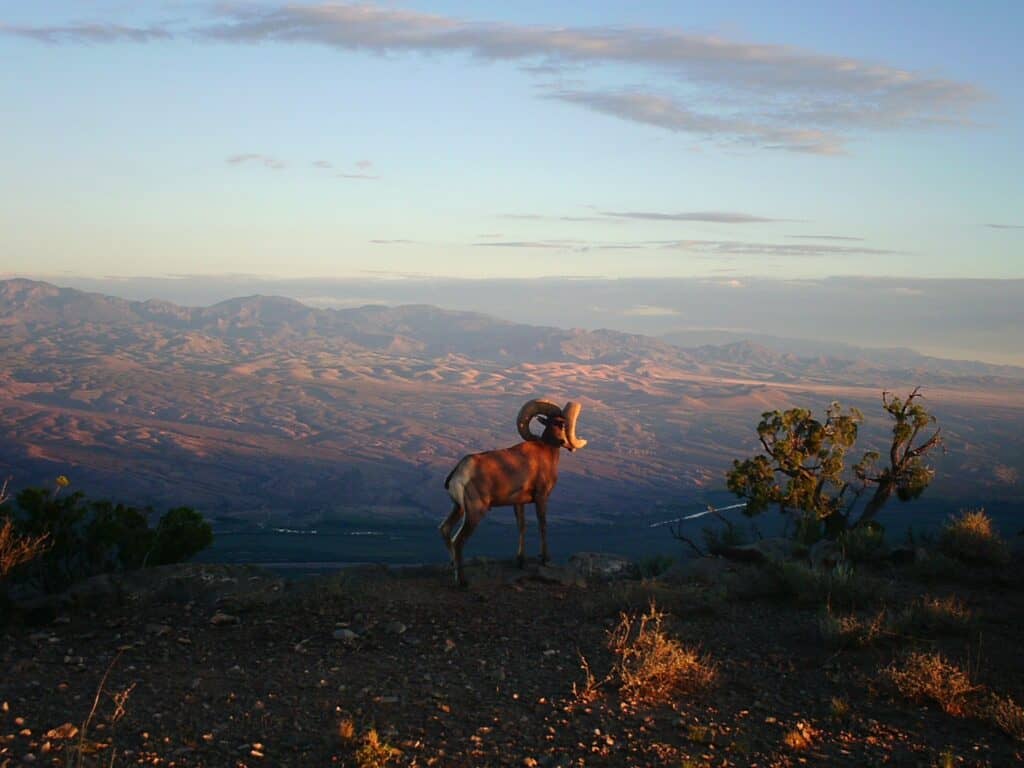
Mule deer aren’t exactly in any kind of conservation danger in this area. But bighorn sheep (Ovis canadensis), also use artificial drinking stations. Since cougars sometimes prey on bighorn sheep, wildlife managers looking to boost their numbers may consider placing drinking stations in areas without ambush-worthy cover, Prude said.
Header Image: A cougar captured on a trail camera near a drinking station. Credit: Hunter Prude



